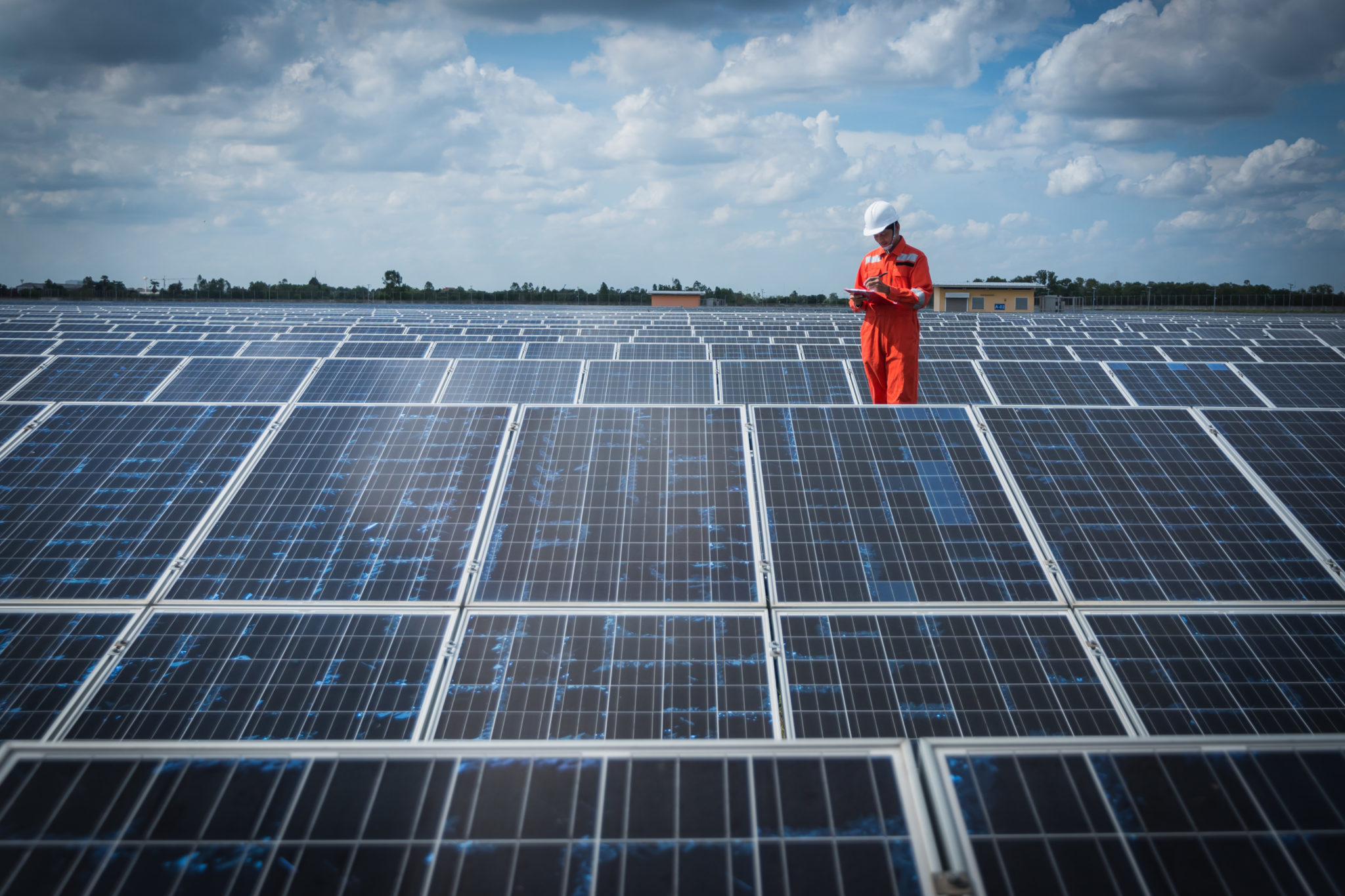The energy investment landscape post Covid-19
Published on 1st July 2020
The energy sector has proven its resilience and adaptability in dealing with the unprecedented challenges of the past few months. As the focus turns to a green recovery, there are opportunities for those able to embrace innovation and flexibility.
These were some of the conclusions of a virtual roundtable hosted by Osborne Clarke and Lane Clark & Peacock on 23 June 2020. The event brought together key sector stakeholders for a discussion focused on the energy investment landscape post Covid-19.

Covid-19 disruption
Immediate challenges facing the industry due to Covid-19 include construction delays, the running down of inventories, pressure on supply chains and the fluctuation of power pricing. This in turn impacts valuations and liquidity in funds and institutions.
However, longer term, there are investment opportunities around asset management and optimisation using data, as well as the opportunity to 'build back better' in the context of the much-needed green recovery. Greener construction methodologies, the electrification of heat and hydrogen power all represent areas of intrigue to potential investors.
The industry has been reactive to change during the pandemic and it is clear from Ofgem's recent open letters that the energy regulator is taking a pragmatic approach to compliance, but that the sector must now clear the Covid-19 backlog and move forward. This signals the need for the industry to understand the future of the energy investment landscape.
Market prices present real opportunity
The significant fall in electricity demand over the last three months, coupled with a fall in commodity prices, which are a consequence of both Covid-19 and other global factors, offers an insight into the energy market going forwards.
The weekend of 23-24 May saw a total of 30 hours of negative electricity and gas prices, including 17 consecutive hours of negative pricing as result of low residual demand due to the Covid-19 lockdown and high levels of renewable generation on the system. This result may be indicative of the future pricing landscape, with current predictions being that low residual demands similar to those seen recently could be normalised by 2025, and that by 2030 we could see residual demand of below 10GW over 28% of hours.
Despite speculation that exporting excess power through interconnectors could mitigate negative price events, during the periods of negative pricing we have seen recently the interconnectors were exporting, but were not doing so at full capacity. These scenarios offer clear opportunities for technologies that can benefit from negative prices by increasing demand, such as battery storage.
The level of volatility in the market presents another area of opportunity. The spread in electricity and gas prices on the day ahead have recently decreased, partially due to the fall in maximum prices resulting from the collapse of gas prices. Nevertheless, the spread remains significant. It is expected that the day ahead price spread will increase and that negative prices will begin to become more prevalent as commodity prices recover and renewable penetration increases. This expectation also represents an opportunity for traders and assets which can optimise volatility.
Flexibility and shifting revenue streams
Flexibility is increasingly vital to the system, as the energy sector becomes a space where wholesale prices are becoming less important as signals for investment. There will likely be more value in ancillary markets and the capacity market, with aggregation, demand-side response and electric vehicle charging infrastructure anticipated to be significant contributors to system flexibility.
In the current climate timing is an important concern for funds. When looking at a pipeline of development assets, funds are keen to control when they are able to take over the management of an asset and how it will sell its generation. As part of the move away from one or two attractive long-term revenue streams, investors are keen to understand when each of its assets are ready to start performing, so that they can avoid buying into PPA commitments too early or too late. Funds are looking for more information on availability and forecasting so that they can better understand and have more confidence in their approach to energy management. Asset management is no longer an afterthought, but is becoming a centralised process which may operate in-house.
As Contracts for Difference (CfD) strike prices continue to fall in light of competition and technological advancements, they may soon reflect values which sit below market price. Investors will have to decide between the longevity and security of a CfD contract and an unsupported approach that carries greater risk and return potential. This decision is made more complex with the changes to how negative prices are treated in the different Allocation Rounds of the CfD, with AR2/3 not receiving top ups after six hours of negative pricing, and the latest AR4 round being proposed to receive no top ups during negative price periods. The implications of these changes directly impact CfD beneficiaries but also the dynamics of the wider market. Investors need to be aware of the scale of these impacts on existing and future projects.
Wholesale market revenues will and already have become less important. Instead, industry players are more concerned with finding value in other markets, including the emergence of new markets, which are better suited to assets such as large scale standalone storage.
Whilst the challenge for the revenue stack has not disappeared, there are promises on the horizon with the various new ancillary services products coming out of National Grid as well as the changes being made to existing products in this area.
Revenue stack
Constraint revenue is making up an increasingly large share of the revenue stack and balancing and ancillary markets represent a smaller share. Whilst balancing and ancillary markets have potential value, the shallowness of these markets means they are susceptible to cannibalisation. Balancing costs have increased significantly over the last year due to constraint costs and system stability issues and are expected to continue to increase going forward. The provision of locational balancing, footroom and inertia to the system have proven particularly lucrative recently to participants able to provide this system stability to NGESO.
The underlying drivers of balancing costs mirror negative price drivers where, as is currently the case, renewable generation is higher than demand. We have however seen instances, as recently as 4 March, where renewable generation is very low and demand is high. In this case, it led to a 37% Loss of Load Probability and cash out prices of over £2,200/MWh. As demand levels begin to recover post Covid-19, it is expected that increased renewable penetration to the system will increase the number of low de-rated margin periods, increasing the opportunity for flex assets and efficient trading.
Existing market mechanisms are not designed well to alleviate local constraints. Until recently, any alleviation has been done on an ad-hoc basis in a National Grid operated control room with minimal transparency on how decisions have been made. The industry is likely to see more formalised markets in place to deal with local constraints as we move forward and regulation will need to catch up with the innovation required in this space.
Meeting the net zero challenge
A significant build-out of renewable capacity is needed for the UK to attain its net zero targets. This is illustrated by the estimated required increase in installed capacity forecasted by National Grid and the Committee on Climate Change, being an estimated minimum of £10 billion worth of investment annually, at a total cost of between £300 billion and £340 billion.
The importance of innovation
Covid-19 is an enabler to innovation in the energy sector and the importance of innovation was corroborated by Energy UK this week in its joint report with PWC on the Covid-19 recovery. Innovation in the energy sector is not limited to developments in technology, but also encompasses innovation in contracts, business models, decision making and the diversification of portfolios.
Electric vehicles
Electric vehicles will play a central role in the energy mix of the future, as providers of frequency response and stability to the system. However, there are limitations associated with electric vehicles, including the 'upper limit' on the proportion of the battery available to the system as a result of decisions of the consumer and the duration of the battery.
Conclusion
While energy investors continue to operate in a difficult market, investors are looking at a variety of investment options. The only certainty is that viable future portfolios will look different. They will include a blend of technologies, enabling risk to be spread and be based on multiple revenue streams. Clearly, there will need to be some stimulus offered by the Government in relation to decarbonisation, digitalisation and electric vehicles subsidies, and only then will investors know where to get the biggest returns.
If you would like to attend future events discussing investments in the energy sector, please sign up here or email one of our experts below.



